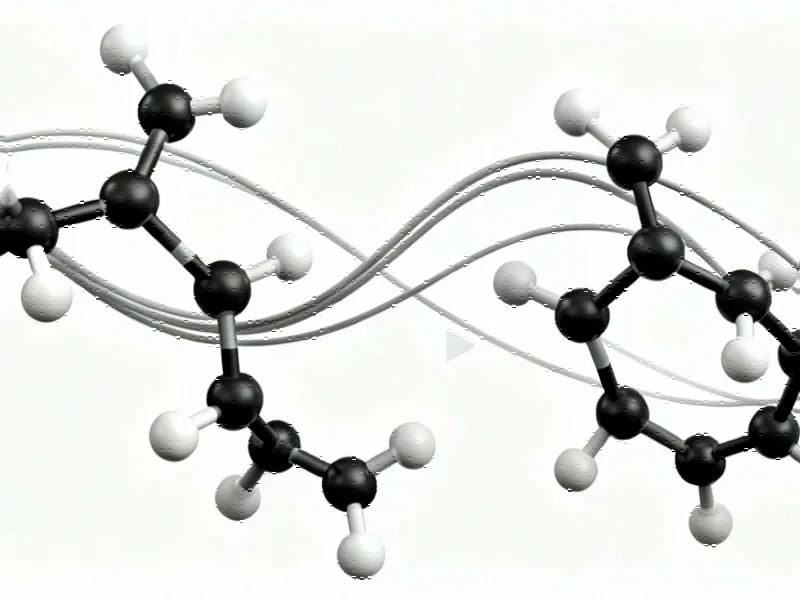Revolutionizing Zeolite Synthesis Through Computational Prediction
In a groundbreaking study published in Nature Materials, researchers have developed a sophisticated computational workflow that successfully distinguishes between feasible and unfeasible zeolite intergrowths. This innovative approach combines exhaustive computational screening with experimental validation, marking a significant advancement in materials design and synthesis prediction.
The research team constructed and evaluated possible interfacial structures through rigorous matching of lattices and atoms, followed by geometry optimization using atomistic simulation techniques. What makes this approach particularly powerful is its ability to identify all experimentally confirmed zeolite intergrowths with specific phase boundary structures, demonstrating remarkable predictive accuracy.
The Limitations of Traditional Structural Similarity Approaches
Previous methodologies for predicting zeolite intergrowths primarily relied on structural similarity in bulk zeolites. However, this approach proved insufficient, as many zeolite pairs exhibiting high structural similarity have never been observed to form intergrowths. This limitation prompted the development of a more sophisticated model focusing specifically on interfacial structures rather than bulk crystal properties.
The researchers hypothesized that zeolite intergrowths could be constructed using only tetrahedrally coordinated silicon atoms and bridging oxygen atoms in periodic cells, excluding cases involving inherent point defects. This assumption, supported by previous studies of non-interrupted crystal models, formed the foundation for their computational workflow.
Massive Computational Screening and Energy Descriptors
The scale of this computational effort was unprecedented. The team applied their workflow to 260 non-interrupted zeolite structures with 54,585 unique surface cuts, resulting in 33,670 zeolite pairs and approximately 1.03 trillion atom match combinations. Through successive filtering stages involving lattice matching, atom matching, and structure optimization, the researchers narrowed down the possibilities to 1,348 pairs with 10,553 interface structures.
Key to their success was the development of two critical energy descriptors: absolute energy difference between constituent zeolites and interfacial energy. The team discovered that experimentally confirmed zeolite intergrowths consistently exhibited near-zero interfacial energies, particularly those synthesized hydrothermally. This characteristic was observed in only a small percentage of zeolite pairs, confirming the effectiveness of these energy-based metrics.
These computational approaches represent significant industry developments in predictive materials science.
Validating the Computational Predictions
The research team selected a promising zeolite pair (RSN/VSV) based on similarity in synthesis conditions and structures from the computationally identified candidates. The rationally designed synthesis condition successfully yielded the targeted zeolite intergrowth, experimentally confirming the accuracy of their computational workflow and screening methodology.
This validation demonstrates the potential for computer-designed synthesis of complex materials, opening new possibilities for targeted material development. The success of this approach suggests that similar methodologies could be applied to other challenging materials systems, potentially accelerating discovery across multiple domains of materials science.
This breakthrough comes amid broader market trends favoring computational approaches in materials development.
Distinguishing Conventional and Non-Conventional Synthesis Pathways
The study revealed important distinctions between intergrowths formed through conventional hydrothermal synthesis and those created via non-conventional topotactic transformations. While most hydrothermal intergrowths exhibited near-zero interfacial energies, several outliers (CAS/NSI, OKO/PCR, OKO/UTL and ECNU-23) demonstrated that non-conventional routes can achieve structures with higher energetic differences.
This finding has significant implications for synthesis strategy selection. For conventional hydrothermal conditions, the requirement for similar energetics between constituent phases appears much stricter. The researchers propose that successful intergrowth formation under these conditions depends on the similarity of thermodynamic pathways for different growth modes.
These findings contribute to our understanding of related innovations in computational prediction methodologies.
Broader Implications and Future Applications
The computational workflow demonstrated exceptional classification performance, with the absolute interfacial energy descriptor achieving an area under the curve (AUC) of 0.994 in receiver operating characteristic analysis – nearly perfect classification. This significantly outperformed traditional structural similarity metrics, which produced many false positives.
This research establishes a new paradigm for materials design, where computational screening can reliably identify synthesizable materials before experimental attempts. The methodology could dramatically reduce the time and resources required for materials discovery, particularly for complex systems like zeolite intergrowths with important applications in catalysis, separation, and ion exchange.
The approach shares conceptual similarities with recent technology developments in predictive modeling across scientific domains.
As computational power continues to grow and algorithms become more sophisticated, we can expect to see more examples of computer-designed materials reaching laboratory validation. This study represents a significant milestone in that journey, demonstrating that with the right physical insights and computational approaches, we can indeed draw clear boundaries between what is feasible and unfeasible in materials synthesis.
This advancement in predictive capability mirrors progress in other fields facing complex challenges, similar to industry developments in software and security systems.
This article aggregates information from publicly available sources. All trademarks and copyrights belong to their respective owners.
Note: Featured image is for illustrative purposes only and does not represent any specific product, service, or entity mentioned in this article.



